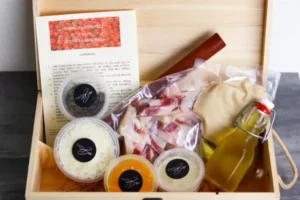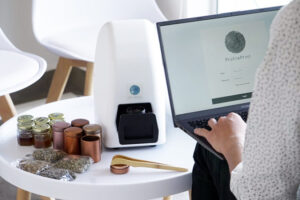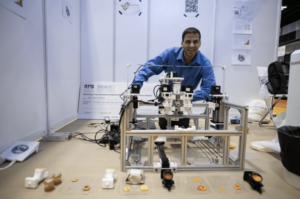What is food innovation in Asia? Food innovation is the development and commoditization of new food products, processes, and services. Few areas of innovation are as far-reaching as food, and as the recent McDonald’s BTS phenomenon shows, food innovation doesn’t even need to be about food.
Nowhere is food innovation as imperative as the world’s fastest-changing food market: Asia. Significant population growth, fast-changing consumer requirements, and climate change challenges will impact every aspect of the food industry, from early-life nutrition to chronic disease awareness. So how can food and beverage companies innovate for this fast-changing, fast-growing market?
Here are 4 food trends and 6 different types of innovation in Asia that large companies and startups alike can harness.
4 food trends in Asia

Emphasis on healthy home cooking
As part of the pandemic-induced focus on health, more consumers are opting to cook and bake healthy meals at home. In fact, bread machine sales grew by 652% during COVID-19. Responding to the lockdown in Singapore, Italian restaurant Pasta Bar created meal kits that featured their handmade pasta, allowing consumers to cook gourmet pasta meals by following simple instructions in the kits.

Plant-based protein
Demand for plant-based protein is expected to increase by 25% in Asia over the next five years, with many consumers citing health and environmental concerns as motivations to adopt meat alternatives. However, the rise of these specialty ingredients can be plagued by counterfeits and cheap fillers. Singaporean startup, ProfilePrint, saw an unfilled need for quality assurance and regulatory compliance to ensure authentic, quality alternative proteins. By harnessing AI-enabled fingerprinting, ProfilePrint helps manufacturers assess the quality of their ingredients and detect fraud within a few seconds.

Fortified & functional food
The Asian functional food market is projected to grow from $51 billion in 2019 to $71 billion in 2025 due to increasing disposable income and consumer awareness. Itchitan, a Thai beverage company, has capitalized on this trend through a fortified water product imbued with vitamins and ginkgo. Said to nourish the brain and stimulate blood circulation, Itchitan’s fortified water offerings address consumer concerns around vitamin intake in a convenient format.

Digital adoption
A recent survey by Bain & Company and Facebook found that online grocery shopping grew by close to 300% in Southeast Asia during the pandemic. Coupled with this is the increasing adoption of social media and e-commerce platforms. Capitalising on these trends, Ai Palette, a Singaporean start-up, utilises predictive analytics, natural language processing, and image recognition based on social media content to help food manufacturers identify consumer needs and opportunity areas to focus their innovation efforts on.
6 types of food innovation in Asia

Collaborating with influencers
Through time-limited collaborations with influencers, brands have harnessed two powerful secrets to growth: fan communities and the fear of missing out. The BTS McDonald’s meal is just one such example. Their BTS-unique packaging and sauces have been met with overwhelming demand from fans, and is a prime example of how a food brand can leverage the reputation of influencers.
This goes to show how food innovation in Asia doesn’t necessarily have to be about food.

Reducing supply chain waste
Around 30% of food in Asia is wasted along the food supply chain before reaching consumers. Innovating on the supply chain could solve the food waste problem – freeing up more resources to feed the planet and its growing population. IXON, a Hong Kong-based start-up has created a sous-vide aseptic packaging to store fresh meat at room temperature for up to two years. This eliminates the need for cold chains, decreasing the cost of transportation for meat suppliers and improving accessibility of meat products for lower income countries.

Personalised nutrition
Consumers are now privy to a whole host of personalised nutritional advice and are looking for ways to incorporate that into their diets. Acknowledging that consumers are now more discerning about what they put into their mouths, Anrich3D offers consumers personalised meals through the use of 3D food printers. Consumers are able to enter their personalized nutritional advice onto their platform and “print” out a meal consisting of precise amounts of ingredients for optimal nutrition.

Convenient consumption
Consumers are seeking products and services that help make their lives easier, faster and more convenient whilst ensuring well-being. Sustenance creates meal pouches that make it convenient for consumers to eat healthy without the hassle of cooking healthy and having to put diets at the centre of their lives. Their meal-replacement offerings cater to time-starved people like busy workers who prefer to have a quick yet healthy meal.

Making the planet a priority
Consumers are now buying brands that demonstrate a commitment to sustainability through adopting practices such as up-cycling ingredients, plant-based foods, regenerative meat and eggs, and sustainable seafoods. S4S Technologies, a start-up from India has developed a way to dehydrate food using solar energy to prevent it from going to waste. Excess food is dried, preserving up to 85% of the nutrient profile, and turned into snacks and ingredients for cooking.

Enhancing the experience
Satisfying consumers with a great service can elevate your brand and products into compelling experiences that keeps them coming back again and again. Haidilao’s success is strongly attributed to the experience that it provides for its customers. Complimentary services like manicures, selfie prints and smartphone detailing are just some of the experiences that augments the value of Haidilao’s hotpot offerings.

Want to branch into the food industry?
Find out how we helped Danone create 8 product concepts for the Chinese food & beverage market.


